
30 List of Animals Starting With Letter J Picture and Facts
Get ready to embark on a fascinating journey through the animal kingdom as we explore 30 incredible creatures that all have one thing in common: their names start with the letter J! From the adorable Japanese Macaque to the majestic Javan Rhinoceros, these animals are sure to capture your imagination and leave you in awe of the diversity of life on our planet.
In this article, we'll not only introduce you to these amazing animals but also delve into their unique characteristics, habitats, and conservation status. You'll learn about the challenges they face in the wild and what we can do to help protect them for future generations.
Whether you're a budding zoologist, a curious student, or simply an animal lover, this article has something for everyone. We've made sure to present the information in a way that's easy to understand and engaging for middle school and elementary school children, while still providing plenty of interesting facts and details for older readers.
So, get ready to meet some of the most incredible animals on the planet, from the tiny Jumping Spider to the massive Jumbo Squid. Along the way, you'll discover the amazing adaptations that help these creatures survive in their diverse habitats, from the dense forests of Asia to the vast oceans of the world.
Join us on this exciting adventure as we explore the wonderful world of animals that start with the letter J!
30 Fascinating Animals That Start With the Letter J
1. Japanese Macaque
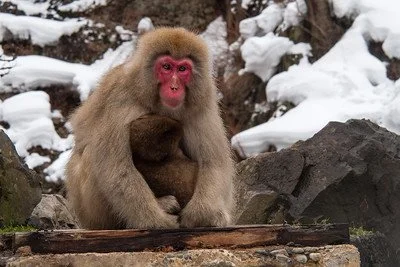
Also known as the Snow Monkey, the Japanese Macaque is a unique primate found in the mountains of Japan. These clever monkeys are known for their love of soaking in natural hot springs during the cold winter months.
2. Javan Rhinoceros

The Javan Rhinoceros is one of the rarest large mammals on Earth, with only around 60 individuals remaining in the wild. These majestic creatures are found only in Indonesia's Ujung Kulon National Park.
3. Japanese Squirrel
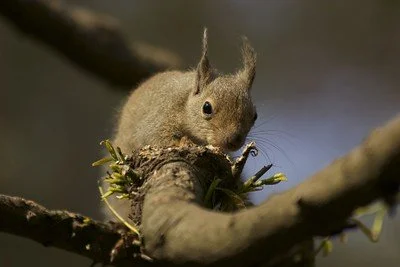
Endemic to Japan, the Japanese Squirrel is known for its distinctive ear tufts and bushy tail. These adorable rodents are found in forests throughout the country.
4. Jumping Spider
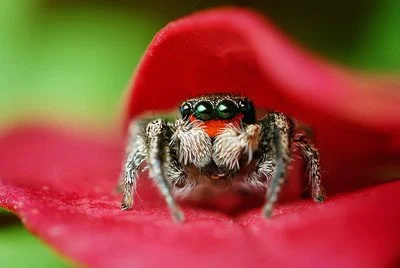
Jumping Spiders are a diverse group of arachnids known for their incredible leaping abilities and keen eyesight. These tiny hunters can be found in various habitats worldwide.
5. Jack Russell Terrier

The Jack Russell Terrier is a small but energetic and fearless dog breed originally developed for fox hunting in England. Today, they make popular companion animals.
6. Japanese Beetle
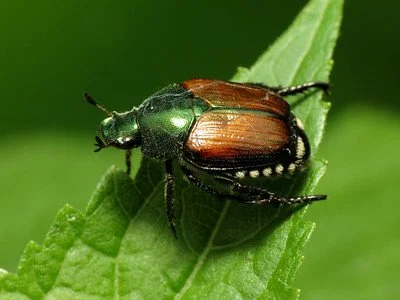
The Japanese Beetle is an invasive species in North America, known for its metallic green and copper coloration. These insects can cause significant damage to crops and gardens.
7. Jaguarundi Cat
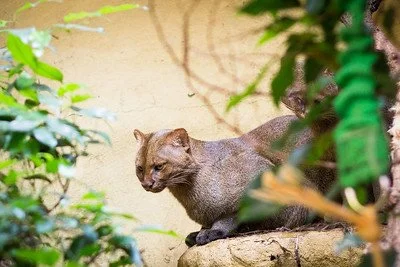
The Jaguarundi is a small, sleek wild cat found in Central and South America. With their unique appearance and adaptability, these cats are able to thrive in various habitats.
8. Japanese Giant Salamander
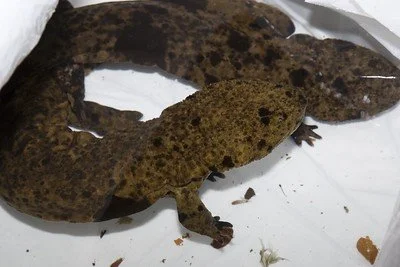
The Japanese Giant Salamander is the second-largest amphibian in the world, reaching lengths of up to 5 feet. These ancient creatures are found in the cool, clear streams of Japan.
9. Jackson's Chameleon
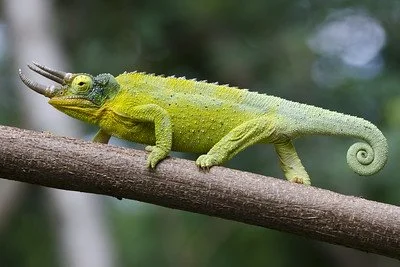
Native to East Africa, Jackson's Chameleons are known for their striking horns and ability to change colors. These fascinating reptiles are popular in the pet trade.
10. Japanese Spitz

The Japanese Spitz is a small, fluffy white dog breed that originated in Japan. Known for their friendly and loyal nature, these dogs make wonderful family pets.
11. Japanese Rat Snake
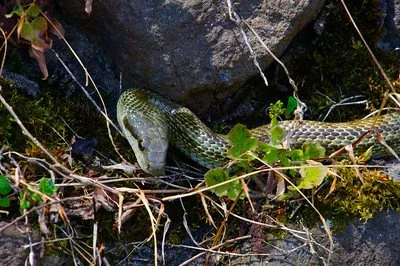
The Japanese Rat Snake is a non-venomous snake species found throughout Japan. These skilled climbers and swimmers play an essential role in controlling rodent populations.
12. Jerusalem Cricket
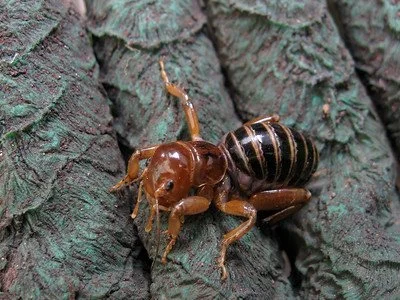
Despite their name, Jerusalem Crickets are actually native to the western United States and Mexico. These large, flightless insects are known for their powerful jaws and nocturnal habits.
13. Javan Langur
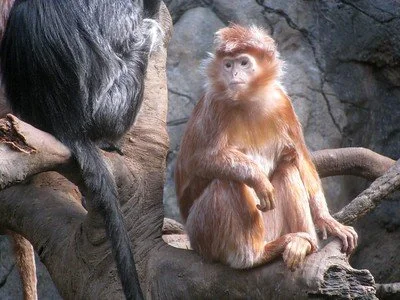
The Javan Langur is a leaf-eating monkey found only on the Indonesian island of Java. These social primates live in groups and play a crucial role in seed dispersal.
14. Jewel Beetle
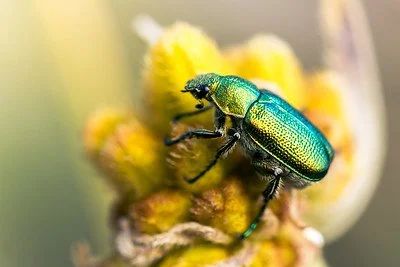
Jewel Beetles are a group of beetles known for their stunning, iridescent colors. These beautiful insects can be found in tropical and subtropical regions around the world.
15. Jungle Carpet Python

The Jungle Carpet Python is a non-venomous snake native to Australia and New Guinea. These skilled ambush predators are popular in the pet trade due to their beautiful patterns.
16. Joro Spider
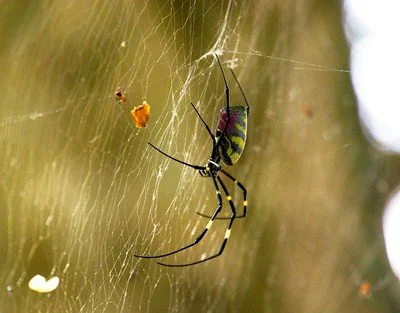
The Joro Spider is a large, colorful spider native to East Asia. Recently introduced to North America, these impressive web-builders have gained attention for their rapid spread.
17. Japanese Terrier

The Japanese Terrier is a small, rare dog breed that originated in Japan. Known for their alert and curious nature, these dogs were originally used for hunting small game.
18. Japanese Crane
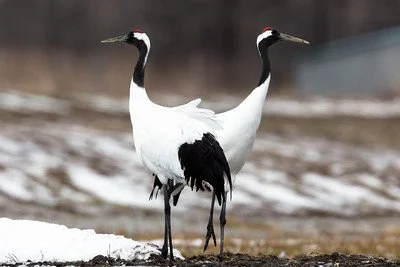
Also known as the Red-crowned Crane, the Japanese Crane is a majestic bird species found in East Asia. These elegant cranes are revered in Japanese culture and are considered a symbol of longevity and good fortune.
19. Japanese Spider Crab
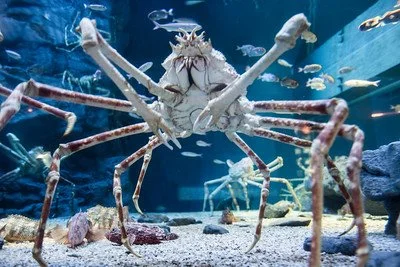
The Japanese Spider Crab is the largest arthropod in the world, with a leg span that can reach up to 12 feet. These deep-sea dwellers are found off the coast of Japan.
20. Jico Deer Mouse

The Jico Deer Mouse is a small rodent species found only in a small area of central Mexico. Little is known about these elusive mice due to their limited range and habitat.
21. Japanese Dwarf Flying Squirrel
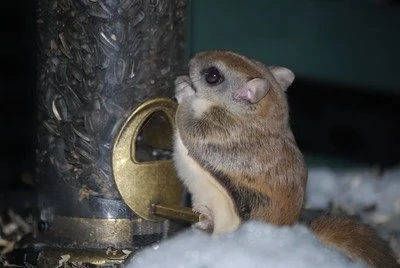
The Japanese Dwarf Flying Squirrel is a small, nocturnal rodent native to Japan. These adorable creatures are known for their ability to glide between trees using a special membrane between their front and hind legs.
22. Jackrabbit
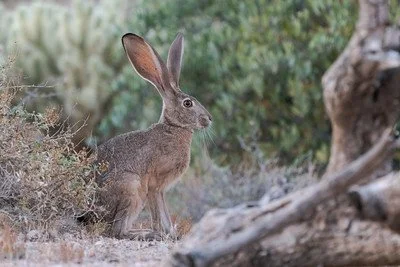
Jackrabbits are actually hares, not rabbits, known for their large ears and powerful hind legs. These swift mammals are found in open areas throughout North America.
23. Jumbo Squid
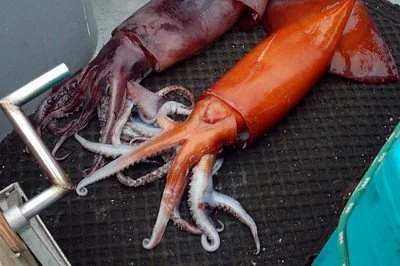
The Jumbo Squid, also known as the Humboldt Squid, is a large, predatory cephalopod found in the eastern Pacific Ocean. These intelligent and aggressive hunters are known to engage in cooperative hunting.
24. Javan Warty Pig
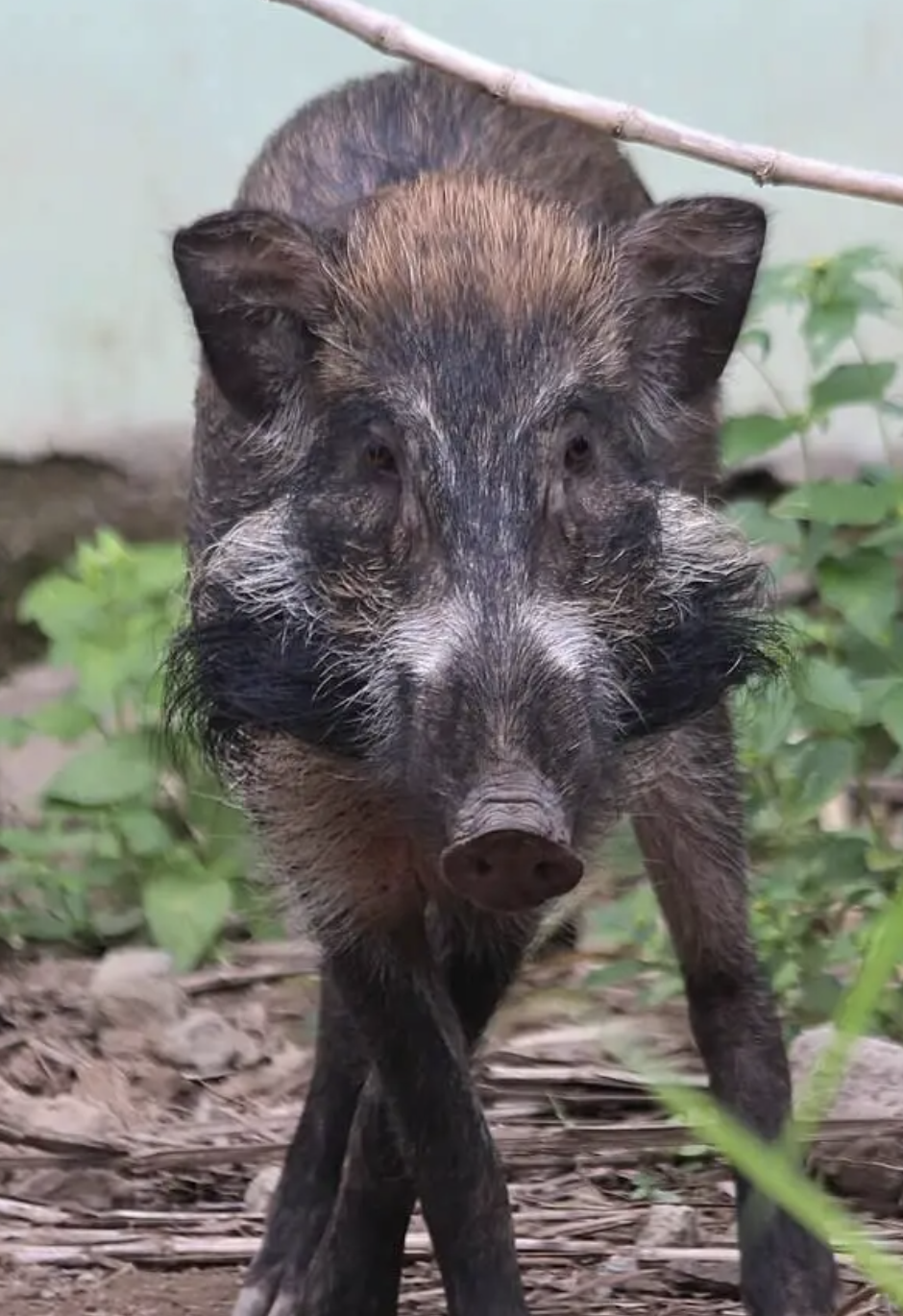
The Javan Warty Pig is a small, forest-dwelling pig species found only on the Indonesian island of Java. These unique pigs are named for the distinctive "warts" on their faces.
25. Jonah Crab

The Jonah Crab is a large, edible crab species found in the waters of the North Atlantic Ocean. These opportunistic feeders play an important role in their marine ecosystems.
26. Javan Hawk-Eagle
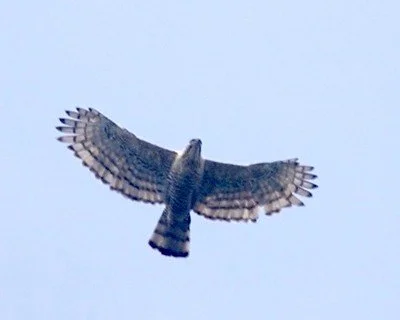
The Javan Hawk-Eagle is a large, powerful bird of prey found only on the Indonesian island of Java. These skilled hunters are known for their distinctive crest and piercing eyes.
27. Jabiru Stork
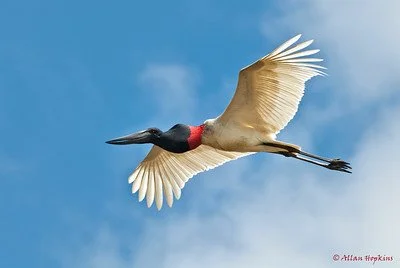
The Jabiru Stork is a large, striking wading bird found in parts of Central and South America. With their impressive size and distinctive black neck and head, these birds are a sight to behold.
28. Jaguar
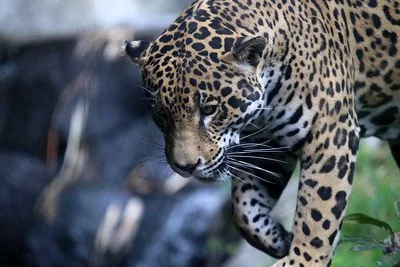
The Jaguar is the largest cat species in the Americas, known for its powerful build and beautiful spotted coat. These apex predators play a crucial role in maintaining the balance of their ecosystems.
29. Jackal
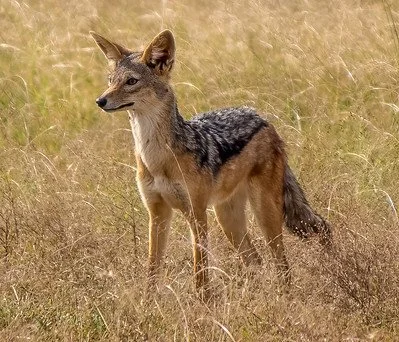
Jackals are medium-sized omnivorous mammals found in parts of Africa, the Middle East, and South Asia. These adaptable canines are known for their intelligence and social nature.
30. Jellyfish
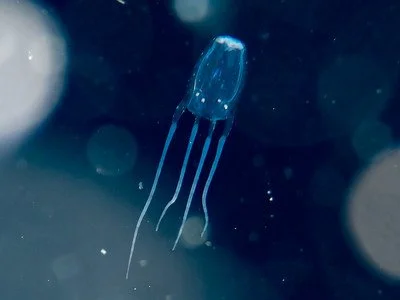
Jellyfish are a diverse group of marine invertebrates found in oceans around the world. With their translucent bell-shaped bodies and trailing tentacles, these fascinating creatures have captivated humans for centuries.
Conservation Status and Threats Facing J Animals
While many animals that start with the letter J are thriving in their natural habitats, others are facing significant challenges and threats to their survival. In this section, we'll explore the conservation status of some of these creatures and the major threats they face.
Endangered J Animals
Some J animals are classified as endangered, meaning they are at a high risk of extinction in the wild. One such example is the Javan Rhinoceros, with only around 60 individuals remaining in Indonesia's Ujung Kulon National Park. The Javan Hawk-Eagle is another endangered species, threatened by habitat loss and poaching.
The Japanese Eel, a popular delicacy in Japan, has also been classified as endangered due to overfishing, habitat degradation, and changes in ocean currents. Conservation efforts are underway to protect these species and their habitats, but much work still needs to be done.
Vulnerable J Species
Other J animals are considered vulnerable, which means they are at risk of becoming endangered if conservation efforts are not implemented. The Japanese Serow, a goat-antelope found in the mountains of Japan, is one such species. Habitat loss and fragmentation due to human activities have led to a decline in their population.
The Javan Lutung, a small monkey native to Indonesia, is also classified as vulnerable. These primates are threatened by deforestation, hunting, and the illegal pet trade. Conservation organizations are working with local communities to protect these species and their habitats.
Major Threats to J Animals
J animals face a variety of threats, many of which are caused by human activities. Habitat loss and fragmentation are major issues, as forests and other natural areas are cleared for agriculture, logging, and development. This not only reduces the amount of suitable habitat available for wildlife but also makes it harder for animals to move between remaining patches of habitat.
Climate change is another significant threat, as rising temperatures and changing weather patterns can alter the availability of food and water, and shift the ranges of species. For example, the Japanese Macaque may face challenges as their mountain habitats become warmer and snow cover decreases.
Poaching and the illegal wildlife trade also pose serious risks to many J animals. Species like the Javan Rhinoceros and the Jaguar are hunted for their horns, skin, and other body parts, which are sold on the black market. Stronger law enforcement and public awareness campaigns are needed to combat these illegal activities.
By understanding the threats facing J animals and supporting conservation efforts, we can help ensure that these fascinating creatures continue to thrive in the wild for generations to come. In the next section, we'll take a closer look at the diverse habitats and locations where these animals can be found.
Habitats and Locations of Animals Starting With J
From the dense forests of Southeast Asia to the vast savannas of Africa, animals that start with the letter J can be found in a wide variety of habitats around the world. In this section, we'll take a closer look at some of the fascinating locations where these creatures live.
J Animals Found in Asia
Asia is home to an incredible diversity of J animals, many of which are found nowhere else on Earth. In Japan, the Japanese Macaque inhabits the country's mountainous regions, where it has adapted to survive in cold, snowy conditions. These clever monkeys are known for soaking in natural hot springs to keep warm during the winter months.
Southeast Asia is another hotspot for J animals, with species like the Javan Rhinoceros and the Javan Lutung found in the tropical forests of Indonesia. The Japanese Serow, a goat-antelope species, lives in the mountains of Japan, while the Japanese Giant Salamander inhabits the country's cool, clear streams.
J Animals Native to Africa
Africa is home to some of the most iconic J animals, including the majestic Jaguar. While many people associate jaguars with South America, they can also be found in parts of Africa, where they play an important role as apex predators.
Other J animals native to Africa include the Jackal, a medium-sized canine that inhabits savannas and grasslands across the continent. The Jackson's Chameleon, known for its striking horns and ability to change colors, is found in the forests of East Africa.
J Animals Living in North America
North America may not be the first place that comes to mind when thinking about J animals, but the continent is actually home to several fascinating species. The Jackrabbit, known for its large ears and powerful hind legs, can be found in open areas throughout the western United States and Mexico.
The Jaguarundi, a small wild cat with a sleek, elongated body, ranges from southern Texas to South America. And while the Japanese Beetle is native to Japan, as its name suggests, this invasive species has become well-established in North America, where it can cause significant damage to crops and gardens.
J Animals of Australia and Oceania
Australia and the surrounding islands of Oceania are home to some truly unique J animals. The Jungle Carpet Python, a beautifully patterned snake, is native to the forests of Australia and New Guinea. These skilled ambush predators are popular in the pet trade.
The islands of New Zealand are home to the Jacky Dragon, a small lizard known for its distinctive head-bobbing displays. And in the waters off the coast of Australia, the Japanese Spider Crab can be found lurking in the depths. These massive crustaceans are the largest arthropods in the world, with a leg span that can reach up to 12 feet.
By exploring the diverse habitats and locations where J animals live, we can gain a greater appreciation for the incredible adaptations and survival strategies that these creatures have developed over millions of years of evolution. In the next section, we'll take a closer look at some of the unique physical characteristics of these fascinating animals.
Physical Characteristics of J Animals
From the tiniest insects to the largest mammals, animals that start with the letter J showcase an incredible array of physical characteristics. In this section, we'll explore some of the unique adaptations, distinctive markings, and impressive size ranges that make these creatures so fascinating.
Unique Adaptations
Many J animals have developed special adaptations that allow them to thrive in their particular habitats. The Japanese Macaque, for example, has a thick, furry coat that helps it survive the cold winters in the mountains of Japan. These monkeys also have specialized fingers that allow them to easily grasp and manipulate objects, a skill that comes in handy when foraging for food.
The Joro Spider, native to East Asia, is known for its impressive web-building abilities. These large, colorful spiders construct intricate, wheel-shaped webs that can span several feet in diameter. The silk used to create these webs is incredibly strong, making it difficult for prey to escape once they become entangled.
Distinctive Markings and Coloration
J animals are also known for their striking and distinctive markings and coloration. The Jaguar, for instance, is instantly recognizable thanks to its beautiful spotted coat. Each individual jaguar has a unique pattern of spots, which helps them blend into their surroundings and stalk prey undetected.
The Japanese Beetle is another J animal with eye-catching coloration. These small insects have a metallic green and copper sheen that makes them stand out against the foliage they feed on. While their appearance may be beautiful, Japanese Beetles are actually considered a significant pest in many parts of the world.
Size Ranges of J Animals
From the minuscule to the massive, J animals come in an astonishing range of sizes. The Jumping Spider, for example, is a tiny arachnid that typically measures less than an inch in length. Despite their small size, these spiders are incredibly agile and can leap many times their own body length to catch prey or escape danger.
At the other end of the spectrum, the Japanese Spider Crab is the largest arthropod in the world, with a leg span that can reach up to 12 feet. These giant crustaceans live in the deep waters off the coast of Japan, where they use their long, spindly legs to traverse the ocean floor in search of food.
The Javan Rhinoceros is another large J animal, with adults weighing up to 5,000 pounds. These massive mammals are critically endangered, with only a small population remaining in the wild. Despite their size, Javan Rhinos are surprisingly agile and can run at speeds of up to 30 miles per hour.
By exploring the unique physical characteristics of J animals, we can gain a deeper appreciation for the incredible diversity of life on our planet. From the adaptations that allow them to survive in their habitats to the distinctive markings and sizes that make them stand out, these creatures are truly remarkable. In the next section, we'll learn about the conservation efforts underway to protect these animals and ensure their survival for generations to come.
Conservation Efforts for J Animals
As we've learned, many animals that start with the letter J are facing significant threats to their survival in the wild. Fortunately, there are dedicated individuals and organizations working tirelessly to protect these creatures and their habitats. In this section, we'll explore some of the conservation efforts underway to help J animals thrive.
Protected Areas and Reserves
One of the most effective ways to protect J animals is by establishing and maintaining protected areas and reserves. These designated spaces provide a safe haven for wildlife, free from the threats of habitat loss, poaching, and other human activities.
In Indonesia, the Ujung Kulon National Park was established specifically to protect the critically endangered Javan Rhinoceros. This vast reserve encompasses over 480 square miles of pristine rainforest and is home to the last remaining population of these magnificent creatures.
Similarly, the Calakmul Biosphere Reserve in Mexico is a vital stronghold for the Jaguar. This protected area spans over 1.8 million acres and is home to a wide variety of wildlife, including jaguars, pumas, and howler monkeys.
Captive Breeding Programs
In some cases, the best hope for a species' survival may lie in captive breeding programs. These initiatives involve carefully breeding animals in controlled environments, with the goal of eventually releasing them back into the wild.
The Japanese Giant Salamander is one J animal that has benefited from captive breeding efforts. These massive amphibians are threatened by habitat loss and overharvesting for food, but dedicated conservationists have been working to breed them in captivity and release them into protected streams and rivers.
Captive breeding programs have also been instrumental in the recovery of the Jamaican Iguana, a critically endangered species that was once thought to be extinct. Through careful breeding and reintroduction efforts, the population of these unique lizards has slowly begun to rebound.
How You Can Help J Animals
While the challenges facing J animals may seem daunting, there are many ways that individuals can make a difference in their conservation. One of the simplest and most effective ways to help is by supporting organizations that are working to protect these species and their habitats.
By making a donation to a reputable conservation group, you can help fund critical research, habitat protection, and captive breeding programs. You can also get involved by volunteering your time and skills, whether it's helping to monitor wildlife populations or educating others about the importance of conservation.
Shop Here to Support Our Conservation Efforts. Our Goal is to be able to support the environmental efforts with our shop! With your Help!
Another way to help J animals is by making conscious choices in your daily life. By reducing your carbon footprint, choosing sustainably sourced products, and properly disposing of waste, you can help minimize the impact of human activities on wildlife and their habitats.
Finally, one of the most important things you can do to help J animals is to spread the word about their plight. By sharing what you've learned about these incredible creatures and the threats they face, you can inspire others to take action and make a difference.
Together, we can work to ensure that the amazing animals that start with the letter J continue to thrive in the wild for generations to come. In the next section, we'll explore some fun and fascinating facts about these creatures that are sure to leave you even more amazed by the wonders of the natural world.
Fun Facts About Animals That Start With J
From the adorable to the astonishing, animals that start with the letter J are full of surprises. In this section, we'll explore some of the most fascinating and little-known facts about these incredible creatures, from their surprising behaviors to their unusual diets and record-breaking abilities.
Surprising Behaviors
Did you know that Japanese Macaques are known for their love of hot springs? These clever monkeys have learned to take advantage of the natural hot springs found in their mountain habitats, soaking in the warm water to stay cozy during the cold winter months. Talk about a spa day!
Another J animal with surprising behaviors is the Jerboa, a tiny desert rodent with incredibly long hind legs. These little creatures are master jumpers, able to leap up to 10 times their own body length in a single bound. They also have a unique defense mechanism: when threatened, they can shed their tail to distract predators and make a quick escape.
Unusual Diets
J animals also have some pretty unusual dining habits. Take the Jabiru Stork, for example. These large wading birds are known for their varied diet, which can include everything from fish and frogs to snakes and even small mammals. They've even been known to eat baby crocodiles!
The Joro Spider is another J animal with an interesting approach to mealtime. These colorful arachnids are master web-builders, constructing intricate, wheel-shaped webs that can span several feet in diameter. But here's the really cool part: the silk used to create these webs is so strong that Joro Spiders can actually catch and eat birds and bats that become entangled in them.
Record-Breaking J Animals
From the tiny to the titanic, J animals are also known for their record-breaking abilities. The Japanese Spider Crab, for instance, is the largest arthropod in the world, with a leg span that can reach up to 12 feet. That's longer than a standard car!
On the other end of the spectrum, the Jaragua Sphaero is one of the smallest reptiles in the world. This tiny gecko, found only in the Dominican Republic, measures just 16 millimeters long - about the size of a dime. It's so small that it can fit comfortably on the tip of a pencil eraser.
The Jaw Moth is another record-breaker, boasting the longest proboscis (tongue) of any moth in the world. This specialized appendage can reach up to 12 inches in length, allowing the moth to sip nectar from deep within the blooms of orchids and other flowers.
As you can see, animals that start with the letter J are full of surprises and wonder. From their incredible adaptations and behaviors to their record-breaking abilities, these creatures remind us of the awe-inspiring diversity and resilience of life on our planet. By learning more about them and working to protect them, we can help ensure that they continue to thrive for generations to come.
Conclusion
From the adorable Japanese Dwarf Flying Squirrel to the massive Jumbo Squid, animals that start with the letter J are a fascinating and diverse group. Throughout this article, we've explored the incredible adaptations, behaviors, and characteristics that make these creatures so unique and captivating.
We've learned about the challenges and threats that many J animals face in the wild, from habitat loss and climate change to poaching and the illegal wildlife trade. But we've also seen the dedicated efforts of conservationists and animal lovers around the world who are working tirelessly to protect these species and their habitats.
By supporting conservation organizations, making conscious choices in our daily lives, and spreading awareness about the importance of protecting wildlife, we can all play a part in ensuring that these amazing animals continue to thrive.
So the next time you see a Jaguar on a nature documentary or read about the Japanese Macaque in a book, take a moment to appreciate the incredible diversity and resilience of life on our planet. And remember that by working together, we can help protect these creatures and their habitats for generations to come.
In the end, the story of animals that start with the letter J is a reminder of the beauty, complexity, and fragility of the natural world. It's a story that belongs to all of us, and one that we have the power to shape and protect.
So let's celebrate the wonder of these incredible creatures, from the tiniest Jumping Spider to the most majestic Japanese Crane. Let's marvel at their unique adaptations and behaviors, and let's work together to ensure that they continue to thrive in the wild.
Because when we protect animals that start with the letter J, we're not just saving a single species or a single letter of the alphabet. We're preserving a vital piece of the web of life that sustains us all.
Frequently Asked Questions
Throughout this article, we've explored the incredible diversity and fascinating characteristics of animals that start with the letter J. But even with all this information, you might still have some questions about these amazing creatures. In this section, we'll answer some of the most commonly asked questions about J animals.
What is the most endangered animal that starts with J?
One of the most critically endangered animals that starts with the letter J is the Javan Rhinoceros. With only around 60 individuals remaining in the wild, all of which live in Indonesia's Ujung Kulon National Park, this species is on the brink of extinction. Habitat loss, poaching, and other human activities have pushed these magnificent creatures to the edge, and conservationists are working tirelessly to protect them and their habitat.
Another critically endangered J animal is the Jamaican Iguana, which was once thought to be extinct. Thanks to dedicated conservation efforts, including captive breeding and reintroduction programs, the population of these unique lizards has slowly begun to rebound, but they still face significant threats from habitat loss and invasive species.
Which J animal is the largest?
The largest animal that starts with the letter J is the Javan Rhinoceros, which can weigh up to 5,000 pounds and stand over 5 feet tall at the shoulder. These massive mammals are the second-largest land mammals in Asia, after the Asian Elephant.
In terms of overall size, however, the Japanese Spider Crab takes the cake. These giant crustaceans can have a leg span of up to 12 feet, making them the largest arthropods in the world. They live in the deep waters off the coast of Japan, where they use their long, spindly legs to traverse the ocean floor in search of food.
Are there any venomous animals that start with the letter J?
Yes, there are several venomous animals that start with the letter J. One example is the Jararaca, a venomous pit viper found in South America. These snakes have a potent hemotoxic venom that can cause severe pain, swelling, and tissue damage in their victims.
Another venomous J animal is the Japanese Funnel Web Spider, which is found in Japan and Korea. These spiders have a highly toxic venom that can cause severe symptoms in humans, including pain, sweating, and muscle spasms. Fortunately, bites from these spiders are relatively rare, and antivenom is available in areas where they are found.
The Jellyfish is perhaps the most well-known venomous J animal. These gelatinous creatures have tentacles lined with stinging cells that can inject venom into their prey or potential predators. While most jellyfish stings are relatively mild, some species, such as the Box Jellyfish, have venom that can be deadly to humans.
By understanding more about these fascinating and sometimes dangerous creatures, we can better appreciate the incredible diversity of life on our planet and work to protect it for generations to come.
